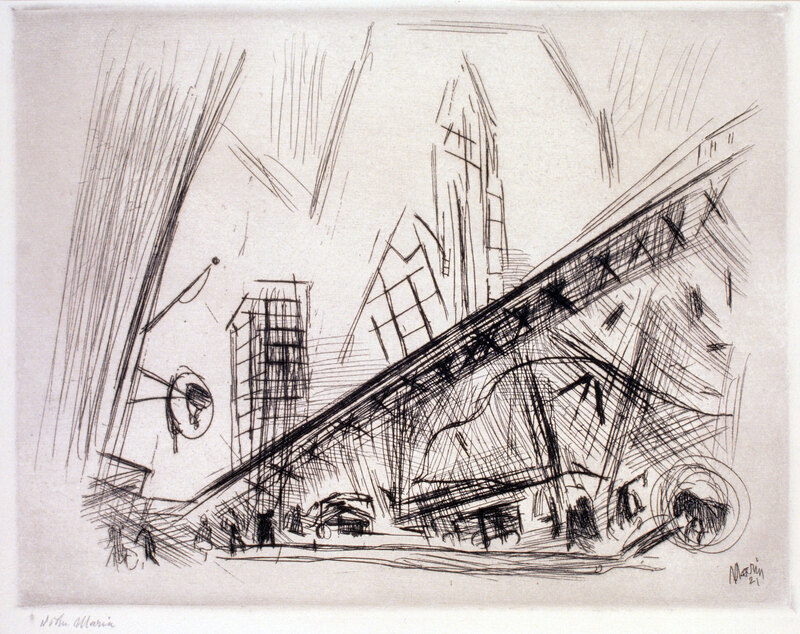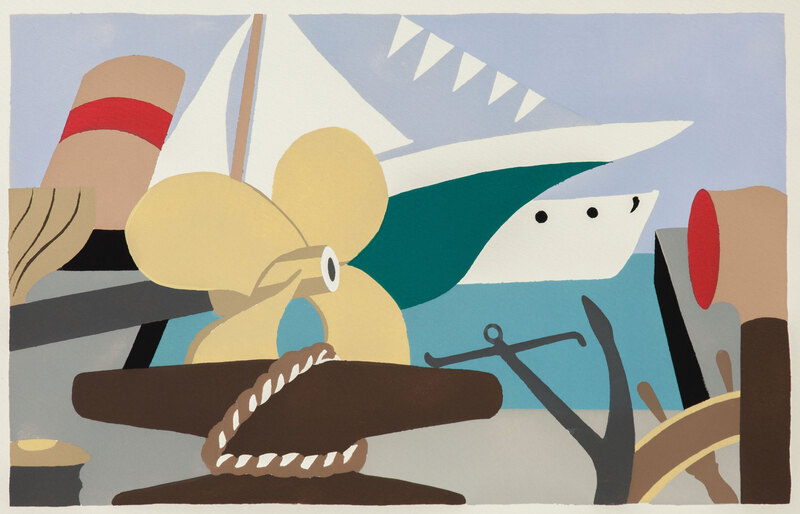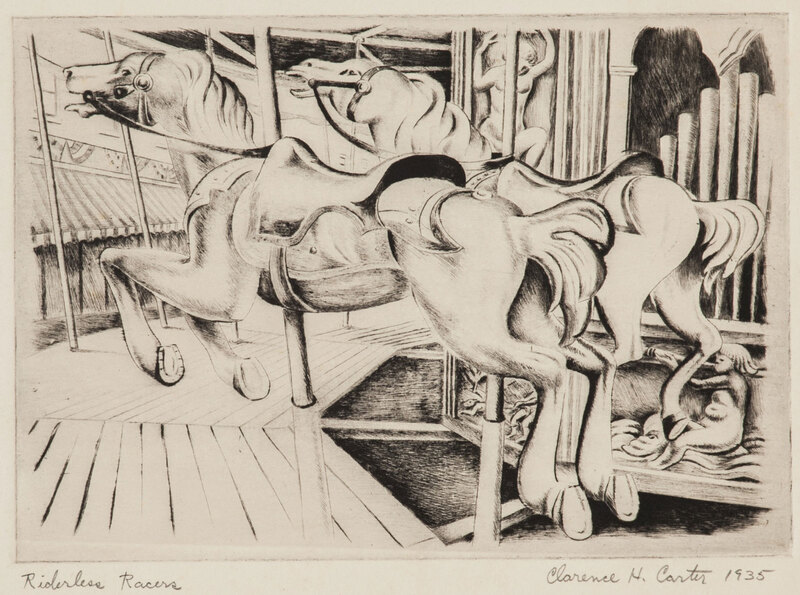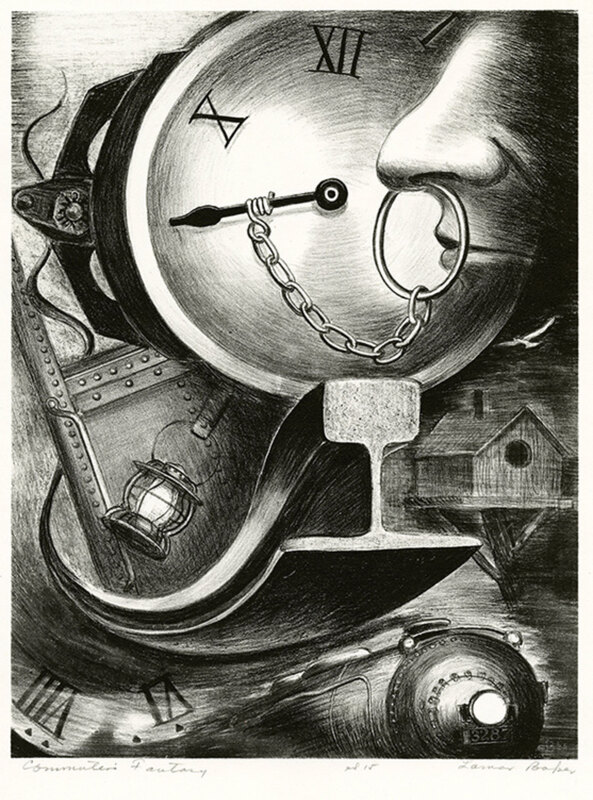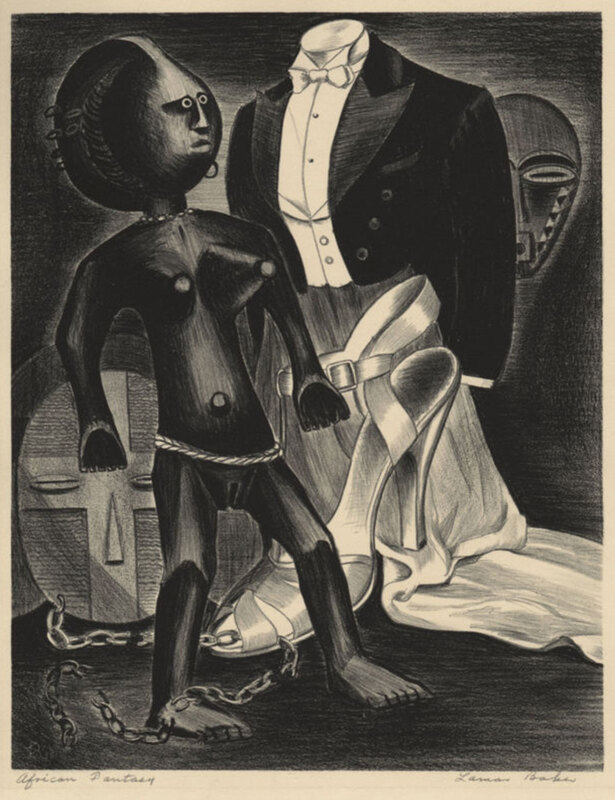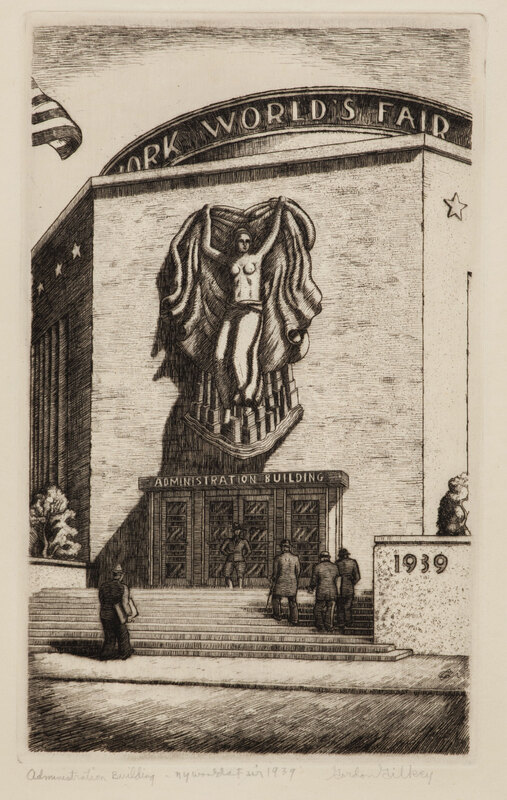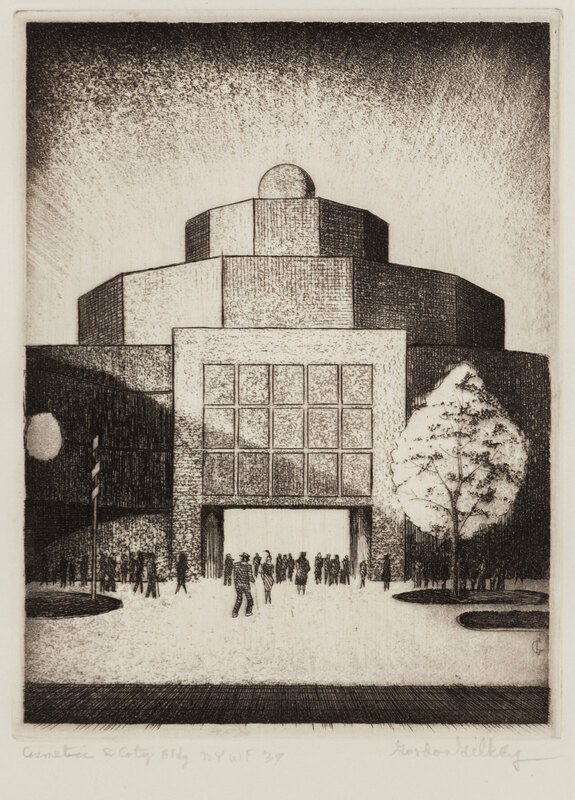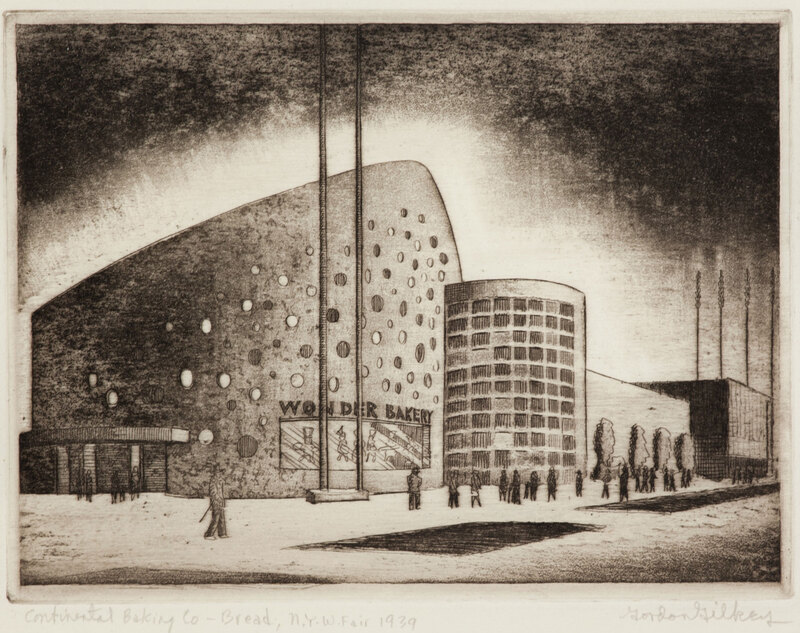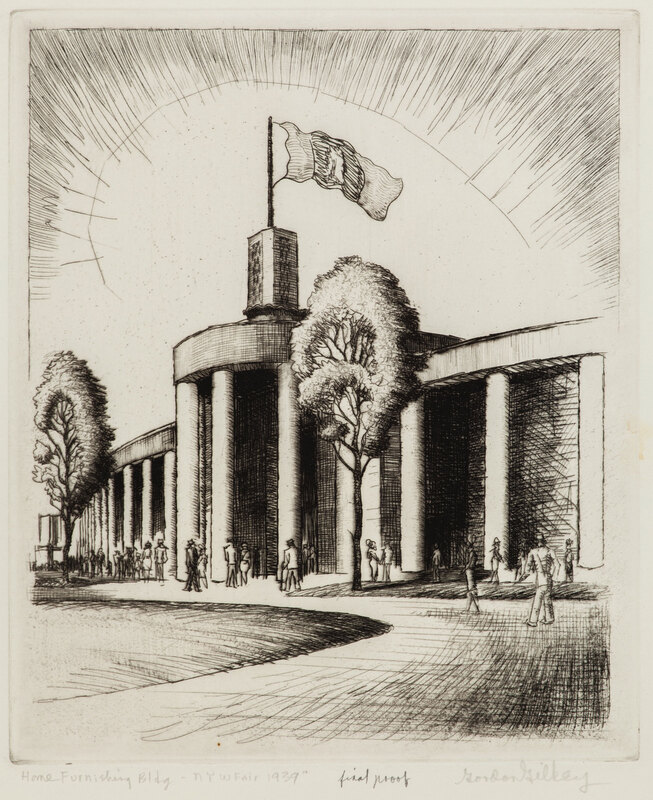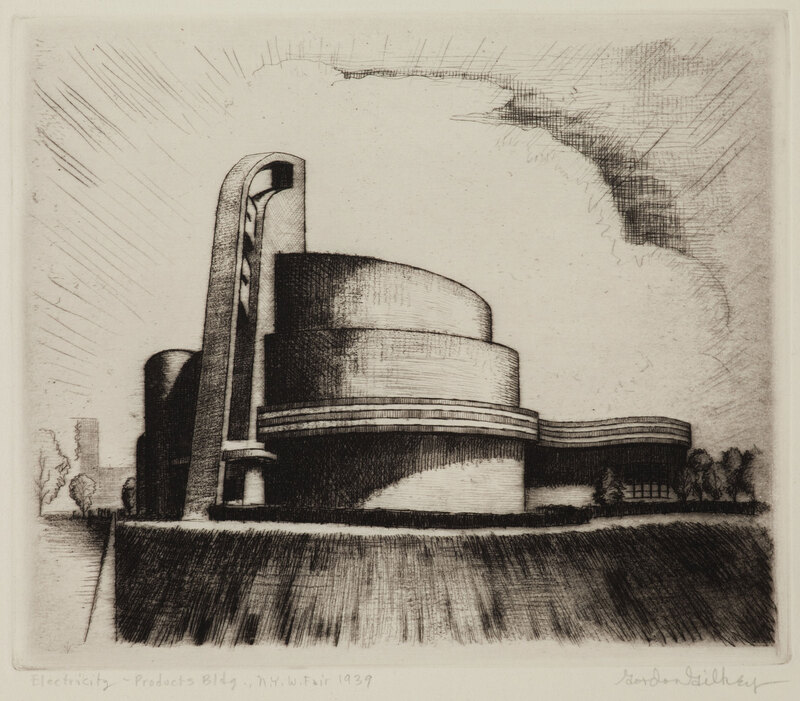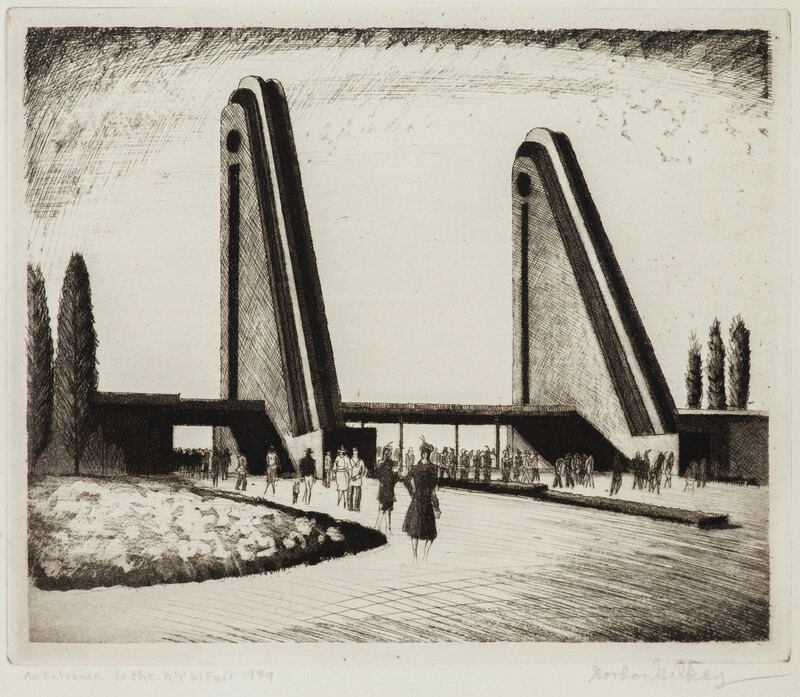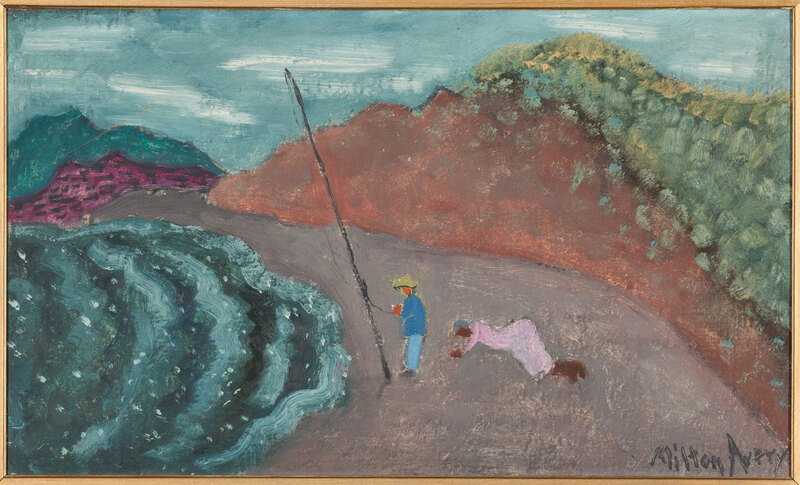Modernism
With the 1913 Armory Show, an exhibition in New York City of European modern art, American artists were challenged to embrace abstractionism. Although some artists in the 1930s pulled back to realism, others continued to work in a more modern aesthetic.
Throughout the later nineteenth century and into the first years of the twentieth, American artists generally held themselves aloof from the more advanced artistic trends developing in Europe, especially in Paris, the artistic capital. From the Impressionism of the 1870s onward, modern artists increasingly questioned the precepts of verisimilitude—the idea that an artwork should strictly resemble what it represented—that had governed most art-making in the West since the Renaissance. Now, artworks would no longer tell a story, but create their own world of shape, color and line through an emphasis on the materials, techniques and processes of their making. This self-referential quality culminated in the years around the First World War in the first fully abstract works of art and came to be known as Modernism.
Many American artists’ suspicions about these developments began to shift dramatically when, in 1913, the International Exhibition of Modern Art was held in New York City, presenting works by the European avant-garde that shattered prevailing expectations for realism. Known as the Armory Show for the building on the Upper East Side where it was held, this exhibition shocked American artists out of their complacency and demanded that they confront the innovations of French art of the previous quarter-century, from the Post-Impressionism of Vincent van Gogh, Paul Gauguin and Paul Cézanne to the latest works of Pablo Picasso, Henri Matisse and Marcel Duchamp. These challenging paintings motivated Americans to catch up over the next decade, assimilate this new sensibility and produce works that offered their own takes on European developments.
The story of American art during the 1930s is often told as one of retreat from these experiments—a return to realism and to nativism, to conservative values in art and to a commitment to the “American Scene.” But even at this moment of isolationism, artists continued to engage with and expand the boundaries of Modernism in the United States. The Federal Art Project, with its relief for unemployed artists, can be seen as creating a nurturing environment for such research, freeing them at least temporarily from the need to find buyers for their unconventional works. Several painters who emerged in the 1940s as Abstract Expressionists found their way toward this free, expressive style of painting during these years of hardship.
––TMD
John Marin (American, 1870 – 1953)
Downtown, The El, 1921
etching; 7 x 9” (image), 11 x 14 ¼” (sheet)
Binghamton University Art Museum, 1972.27
gift of Mrs. Douglas Bond
In this expressionist etching, John Marin captures the dynamism, clamorous movement and transient confusion of the modern city. We see the elevated line running along lower Broadway, which—along with the racing train—form a powerful diagonal cutting across the print. The skyscraper in background, Cass Gilbert’s Woolworth Building (1913), provides a vertical counterpoint that helps to stabilize the composition. Its Gothic spire, echoed in larger, abstracted triangular shapes, reinforces the sense of a city thrusting ever upward. Downtown, The El is an expression of this metropolitan energy: “I see great forces at work,” Marin wrote, “—great movements—the large buildings and the small buildings—the warring of the great and the small—influences of one mass on another.” That interaction of elements, forces and movements in the city is captured in the vitality of Marin’s line and the energy of his execution.
This is one of Marin’s early, and influential, Modernist prints, made a decade after his style had changed from a picturesque nineteenth-century idiom to a Modernist syntax influenced by his encounter with Cubism at the Armory Show.
––TMD
Howard Cook (American, 1901 – 1980)
Greetings from the House of Weyhe, 1929, 1929
wood engraving; 9 x 5 ½”
Binghamton University Art Museum, 2016.4.94
gift of Gil and Deborah Williams
Interpretive text has not been prepared for this object.
Henry Billings (American, 1901 – 1987)
Marine Elements, 1936-37
color stencil; 9 x 14” (image), 13 x 20” (sheet)
Binghamton University Art Museum, 2016.4.87
gift of Gil and Deborah Williams
A nautical still life rendered in simplified forms and broad planes of flat color, Marine Elements revels in beauty of utilitarian objects. Many modern artists were drawn to such functional “Machine Age” forms. We easily recognize the various elements—dock, sea and sky; sailboat and ocean liner; smokestack, propeller and boat cleat; anchor, wheel and ventilator—but the artist arranges them outside of normal spatial logic. He is fascinated, instead, by the contrasts and rhymes he can create between them, and by the way color can lead the eye around the flattened space of the print.
Marine Elements was published by the American Artists Group, which was founded in 1934 to popularize contemporary American art, including the sale of greeting cards featuring reproductions of original artworks.
––TMD
Clarence H. Carter (American, 1904 – 2000)
Riderless Racers, 1935
drypoint; 8 x 9”
Binghamton University Art Museum, 2016.4.107
gift of Gil and Deborah Williams
Interpretive text has not been prepared for this object.
Lamar Baker (American, 1908 – 1994)
"Commuter’s Fantasy" from the Fantasy series, 1936
lithograph; 11 ½ x 8 ¾”
Binghamton University Art Museum, 2020.3.1
Interpretive text has not been prepared for this object.
Lamar Baker (American, 1908 – 1994)
"African Fantasy" from the Fantasy series, 1936
lithograph; 11 ½ x 8 ¾”
Binghamton University Art Museum, 2020.3.2
In this print, a carved African sculpture of a standing female figure seems to be breaking free of the chains that have bound it—along with two African masks—to items of Western fashion: a high-heeled shoe and a man’s dinner jacket, complete with bow tie. The clothing is ominous and disembodied, while the statue is imbued with life, its face wide-eyed with apprehension. In the West, such African sculptures were often called “fetishes,” denigrating the supposed superstition and irrationality of the peoples who crafted them, but here Lamar Baker suggests that it is precisely the formalwear that is subject of extravagant reverence and devotion—the shoe and jacket are the true fetishes.
Surrealism was a Modernist movement that frequently used startling juxtapositions to shock its viewers out of their complacency. Baker has Americanized it by turning its tools toward social critique, creating a powerful allegory of the liberation of perceptions of Africa and its cultures from Western prejudices.
––TMD
Mervin Jules (American, 1912 – 1994)
Circus Clowns, ca. 1940
color screenprint; 20 x 25 ½”
Binghamton University Art Museum, 2016.4.287
gift of Gil and Deborah Williams
Interpretive text has not been prepared for this object.
Gordon Waverly Gilkey (American, 1912 – 2000)
from Etchings of New York World’s Fair, 1939
etchings
Binghamton University Art Museum, 2016.4.43.a-l
gift of Gil and Deborah Williams
a "Grover A. Whalen, President of the Fair," 11 ¼ x 8 ¾”
b "Administration Building," 11 ¾ x 7 ½”
c "Cosmetics and Coty Building," 11 ½ x 9 ¼”
d "The Food Building III," 11 ¼ x 8 ½”
e "Continental Baking Co. Building (Wonder Bakery)," 8 ¾ x 10 ¼”
f "Home Furnishings Building," 11 ¼ x 9”
g "Heinz Dome," 9 ¼ x 11 ½”
h "Electrical Products Building 2," 9 ¼ x 11 ½”
i "The Communications Building," 11 ½ x 9 ¼”
j "New York City Building," 9 ¼ x 11 ½”
k "Corona Gate," 9 x 11 ¼”
l "Aviation Building," 9 x 11 ¼”
Gordon Waverly Gilkey arrived in New York in Fall 1936 from his native Oregon, where he had trained as a printmaker; hearing of the upcoming World’s Fair, to be held beginning in Spring 1939, he quickly contacted officials to express his interest in producing a pictorial record of the event. Although there were not sufficient funds to commission him, he succeeded in convincing a prominent New York publisher to put out a book featuring over fifty of his etchings depicting the Fair. The twelve images seen here derive from that larger series and provide a panoramic overview of the “World of Tomorrow” promised by the Fair’s organizers—a reassuring vision of the streamlined, modernist future free of the economic insecurities of Depression and the political turmoil of looming conflict.
Only three years after completing this series, Gilkey enlisted in the Army during the Second World War, becoming one of the so-called “Monuments Men” who were charged with protecting cultural assets and identifying art looted by German forces. Binghamton University’s own Kenneth C. Lindsay (American, 1919 – 2009) served in this same elite unit.
––TMD
Milton Avery (American, 1885 – 1965)
California Fishing, ca. 1940
oil on canvas; 17 ¾ x 30”
Binghamton University Art Museum, 1969.17
gift of Mr. Maurice P. Geller
As a young painter in the later 1920s, Milton Avery began visiting the few New York art galleries that exhibited work by his modern European contemporaries, and was particularly influenced by the clear, unmodulated color, simplified forms and flattened spaces of Henri Matisse (French, 1869 – 1954). This can clearly be seen in a mature painting like California Fishing, presumably painted in the early 1940s during a summertime trip to the Pacific coast south of Los Angeles.
Two people occupy a strip of beach between cliffs and sea: a man who stands while attaching a hook to the line of his gigantic saltwater surf fishing rod, and a woman who lies down on the sand behind him. There is no story here, nothing to decipher—we are meant simply to marvel at the beauty of color and shape, the sensuous curves of waves, beach and cliff-line undulating from left to right and the contrasting human figures, vertical and horizontal, who seem to interrupt this great natural rhythm.
––TMD
James Lesesne Wells (American, 1902 – 1993)
Untitled (Man Carving Idols), ca. 1929
brush and ink; 7 ½ x 6”
Binghamton University Art Museum, 2020.10
Museum purchase with funds from the Binghamton Fund
Wielding a mallet in his right hand, an artist sits and carves a massive statue in his studio, while an already completed figure—impassive, eyes closed, arms folded over chest—stands nearby. Both sculptures broadly recall African art forms, or perhaps more accurately the Western fascination with such forms which, under the rubric of “primitivism,” served as a potent inspiration for modern art’s experimentation. Importantly, Wells does not seem to show us an African artist carving these “idols,” but a White artist in a studio. The 1920s was a moment of potent “Negrophilia,” a White fascination with all things Black that coexisted with continued and even intensifying racist oppression. This is the dual context for Wells’s image.
The simplifications of form and stark contrast of black and white evident in this drawing reflect the influence of German Expressionist prints on Wells, who would have come across them while a student at Columbia University’s Teachers College (1924-28) and, subsequently, through his association with J. B. Neumann (American, born Germany, 1887 – 1961), an important New York art dealer who supported their work. Wells takes up this White European idiom and makes it his own, in a reflection on the complexities of cultural appropriation in his time.
––TMD
